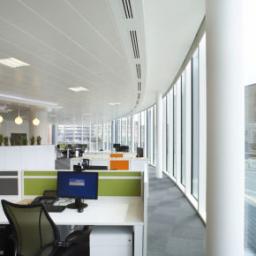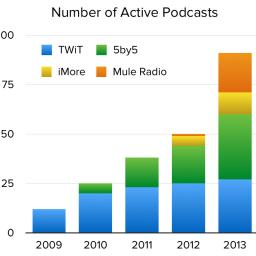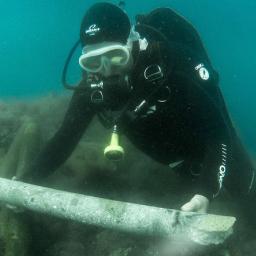Pity those poor advertisers, who are outraged, to say the least. A recent study has shown that
computers being remotely operated by hackers account for almost one in four views of digital video ads worldwide. The fraud leads advertisers to spend approximately $6.3 billion dollars per year for advertising that doesn't have any impact whatsoever. The fake views, which also account for 11 percent of other display ads, often take place in the middle of the night when the owners of the hijacked computers are asleep.
The advertising unions are understandably upset.
"We're being robbed," said Bob Liodice, president and chief executive officer of the New York-based association, which has 640 members that spend more than $250 billion a year in advertising. "This isn't about system inefficiencies or process sloppiness. This is about criminal activity."
But others would say, that's the way the game is played. No word on who wrote the software that manages these fake video views, or who benefits. Finally, pity the poor robots, people, forced to watch video ads all day and night: what a dreary existence!

It's not that the Pirate Bay may cease to exist, although with this most recent raid by Swedish authorities, that may be true as well. It's that since a couple of years ago,
the Pirate Bay has become a shadow of its former self, and changed in ways some users would call fundamental.
TPB has become an institution that people just expected to be there. Noone willing to take the technology further. The site was ugly, full of bugs, old code and old design. It never changed except for one thing - the ads. More and more ads was filling the site, and somehow when it felt unimaginable to make these ads more distasteful they somehow ended up even worse.
The original deal with TPB was to close it down on it's tenth birthday. Instead, on that birthday, there was a party in it's "honour" in Stockholm. It was sponsored by some sexist company that sent young girls, dressed in almost no clothes, to hand out freebies to potential customers. There was a ticket price to get in, automatically excluding people with no money. The party had a set line-up with artists, scenes and so on, instead of just asking the people coming to bring the content. Everything went against the ideals that I worked for during my time as part of TPB.<\a>
What's next for The Pirate Bay?
About three billion miles from Earth, a spacecraft the size of a grand piano
is about to wake up. The spacecraft is called New Horizons, and it has been traveling for nine years across the solar system on a high speed journey to its ultimate destination, the dwarf planet Pluto. A few weeks later, instruments on the spacecraft will begin to make observations. No one really even knows what Pluto looks like. Neither of the Voyagers visited Pluto on their journey through the solar system. One sad, pixelated picture taken by the Hubble telescope in 1994 is the best image of Pluto and its moon Charon ever made.
New Horizons is scheduled to make long-range observations of a small Kuiper belt object, temporarily designated VNH0004, in January 2015, before the Pluto flyby. After passing by Pluto, New Horizons will continue farther into the Kuiper belt. Provided it survives that far out, New Horizons is likely to follow the Voyager probes in exploring the outer heliosphere and mapping the heliosheath and heliopause. The heliopause might be reached around year 2047. Even though it was launched far faster than any outward probe before it, New Horizons will never overtake either Voyager 1 or Voyager 2 as the most distant human-made object from Earth. Close fly-bys of Saturn and Titan gave Voyager 1 an advantage with its extra gravity assist.

The open floor plan of modern offices has its roots in ideas first conceived in the 1950s. In essence, removing barriers and ensuring the continued proximity of workers to each other was expected to facilitate communication and idea flow. But a growing body of evidence suggests that the open office undermines the very things that it was designed to achieve.
In June, 1997, a large oil and gas company in western Canada asked a group of psychologists at the University of Calgary to monitor workers as they transitioned from a traditional office arrangement to an open one. The psychologists assessed the employees' satisfaction with their surroundings, as well as their stress level, job performance, and interpersonal relationships before the transition, four weeks after the transition, and, finally, six months afterward. The employees suffered according to every measure: the new space was disruptive, stressful, and cumbersome, and, instead of feeling closer, coworkers felt distant, dissatisfied, and resentful. Productivity fell.
The research and analysis continues.
The New Yorker provides an interesting look at what we've learned about this new trend in workplace organization.

There have been lots of apps developed and released that facilitate listening to podcasts. Amazingly though,
the software used to create podcasts hasn't evolved much over the years.
Many podcasters have spent the last week sharing how they record their shows, and while the hardware is fun to argue about, the software story leaves a lot to be desired. Casey Liss describes his software setup for recording ATP: Skype, Piezo, Skype Call Recorder, and Google Docs. Jason Snell recommends getting a microphone with a heapdhone jack to compensate for Skype's lack of local input monitoring. If you can stomach it, you can listen to Dan Benjamin describe the ridiculous lengths he's gone to to record multiple guests in real time, and he still ends up dealing with Skype artifacts. This is a professional podcaster with a half-dozen Macs dedicated to the task of getting reasonable audio from remote guests. Ugh.
Allen Pike has some interesting thoughts on the subject, as well as a
previous article detailing the "fall and rise of podcasting". As an avid podcast listener, I agree the field is ripe for improvement. What do you think? And which podcasts do you enjoy listening to?

IEEE Spectrum has an interesting and detailed article about
the long road to Maxwell's equations. It's
not a text full of lengthy demonstrations and mathematical jargon (don't worry there are still some formulas), if anything it's a story of physics and mathematics spread across the nineteenth century.
It explains how, from observations made by
Faraday and others,
Maxwell deduced a set of
20 complex equations describing the electrical and magnetic fields. These equations almost fell into oblivion because of both their complexity and the lack of experimental evidences for the brand new concepts introduced (e.g. electromagnetic waves can propagate without a medium, light is just one of them, etc.). They were only saved thanks to a few passionate scientists,
the Maxwellians, notably
Heaviside who managed to simplify and sum them up into the well-known 4 equations that we all read once in some introductory engineering or physics textbook.
Well, they said they would do it, and they did. A group of Debian loyalists took great issue with the systemd issue in Debian, and threatened they'd fork it if Debian moved forward with its plans to replace trusty old System V init script with the new systemd system developed by RedHat's Lennert Poettering. A week ago, the Debian board voted to move forward with systemd, and the trigger was pulled.
World, meet Devuan. It's pronounced "Dev One" and is backed by a team of "veteran system admins" who prefer the stability and simplicity of the System V init scripts, and frankly aren't overly pleased with a lot of the other recent decisions made at Debian either. They state recent decisions have been too overly influenced by RedHat's developers and are prioritizing Linux desktops over Linux servers, which is not smart given Debian's huge lead in server systems and its relatively small desktop market share.
Forking Debian is no simple matter, and a simple glance at
Distrowatch.org serves as a reminder Debian is the underpinning of a huge number of other distros out there. Where to begin? Here:
Devuan will derive its own installer and package repositories from Debian, modifying them where necessary, with the first goal of removing systemd, still inheriting the Debian development workflow while continuing it on a different path: free from bloat as a minimalist base distro should be. Our objective for the spring of 2015 is that users will be able to switch from Debian 7 to Devuan 1 smoothly, as if they would dist-upgrade to Jessie, and start using our package repositories.
Devuan will make an effort to rebuild an infrastructure similar to Debian, but will also take the opportunity to innovate some of its practices. Devuan developers look at this project as a fresh new start for a community of interested people and do not intend to enforce the vexation hierarchy and bureaucracy beyond real cases of emergency. We are well conscious this is possible for us mostly because of starting small again; we will do our best to not repeat the same mistakes and we welcome all Debian Developers willing to join us on this route.
The Devuan distribution will make an effort to improve the relationship with both upstream and downstream and, particularly in its gestational phase, will do its best to accommodate needs of those downstream distributions willing to adopt it as base. We look forward to statements of interest from such distributions, as well involvement in this planning phase.
Devuan will do its best to stay minimal and abide to the UNIX philosophy of "doing one thing and doing it well". Devuan perceives itself not as an end product, but a starting point for developers, a viable base for sysadmins and a stable tool for people who have experience of Debian. Devuan will never compromise for more efficiency at the cost of the the freedom of its users, rather than leave such concerns to the independent choices made by downstream developers.
They've got a lot of work ahead of them, and are happy to receive both donations and developers. Want to know how you can help? Check them out on Github and the Freenode IRC network, for starters.
lifescience reports that a plant based compound triggers the conversion of white fat into brown fat. The difference between white and brown fat is, that while white fat stores energy, brown fat is used to generate heat to keep the body warm. Consequently mice, when treated with this compound, generated more heat when they were exposed to cold air and therefore burned more calories.
Author Comment: I am skeptical. Articles, which claim some breakthrough regarding obesity, are available a dime a dozen. Usually directly or indirectly some magical compound is mentioned, which if marketed helps for sure... the account of the maker of this compound. Before I'd trust in pharmaceutical solution, I'd like to see an explanation for an effect, which is described here:
http://www.nature.com/news/2010/101124/full/news.2010.628.html Not only humans are getting fatter and fatter, but lab animals are too, despite a very controlled dietary plan which often does not change for years.
New invention outperforms nature with
new gecko-inspired devices that have been used to climb glass walls. "To be able to climb glass felt a little bit magical - it feels like you're hooking this device onto a perfectly flat smooth surface, and it doesn't feel possible," Hawkes said.
Geckos can scale vertical walls and even hang upside down because their plump toes are covered in hundreds of microscopic bristles called setae, which generate a kind of electric force known as van der Waals force, strong enough to keep geckos stuck onto surfaces. The devices are about the size of a human hand but are nevertheless strong enough to support the weight of a person. In contrast, real gecko feet would require a sticky surface at least 186 square inches (1,200 square centimeters) large, nearly twice the size of a modern tennis racket.
In addition to futuristic gear used by soldiers and spies to climb walls, the researchers suggest their new invention could lead to boots that help astronauts conducting spacewalks and to mechanical grippers that snag debris in orbit.




